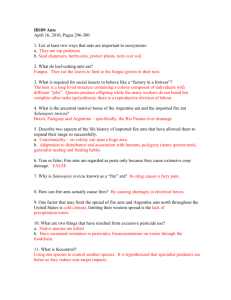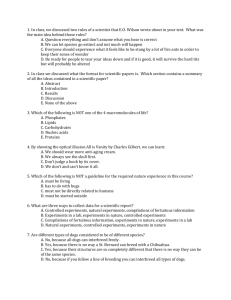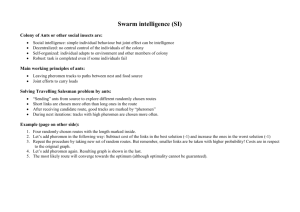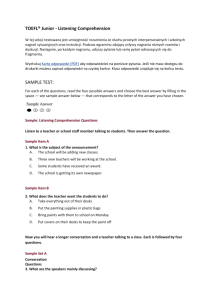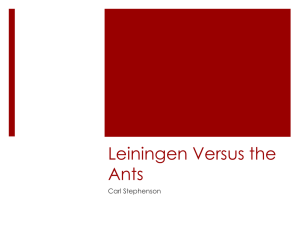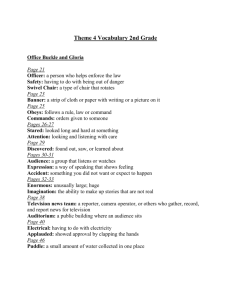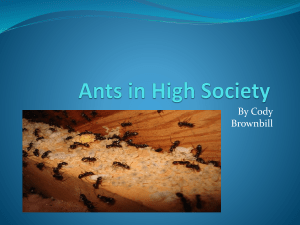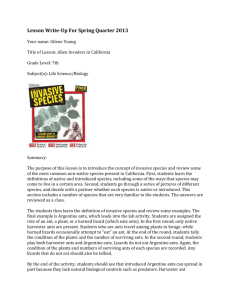Lab Worksheet
advertisement
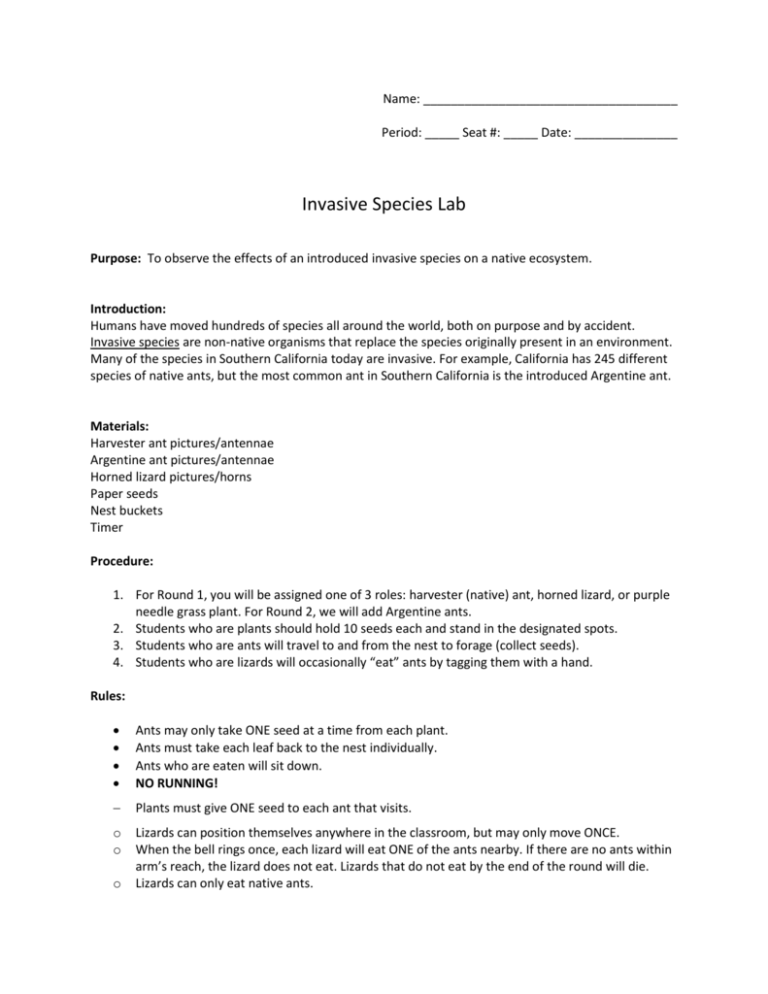
Name: _____________________________________ Period: _____ Seat #: _____ Date: _______________ Invasive Species Lab Purpose: To observe the effects of an introduced invasive species on a native ecosystem. Introduction: Humans have moved hundreds of species all around the world, both on purpose and by accident. Invasive species are non-native organisms that replace the species originally present in an environment. Many of the species in Southern California today are invasive. For example, California has 245 different species of native ants, but the most common ant in Southern California is the introduced Argentine ant. Materials: Harvester ant pictures/antennae Argentine ant pictures/antennae Horned lizard pictures/horns Paper seeds Nest buckets Timer Procedure: 1. For Round 1, you will be assigned one of 3 roles: harvester (native) ant, horned lizard, or purple needle grass plant. For Round 2, we will add Argentine ants. 2. Students who are plants should hold 10 seeds each and stand in the designated spots. 3. Students who are ants will travel to and from the nest to forage (collect seeds). 4. Students who are lizards will occasionally “eat” ants by tagging them with a hand. Rules: Ants may only take ONE seed at a time from each plant. Ants must take each leaf back to the nest individually. Ants who are eaten will sit down. NO RUNNING! Plants must give ONE seed to each ant that visits. o o Lizards can position themselves anywhere in the classroom, but may only move ONCE. When the bell rings once, each lizard will eat ONE of the ants nearby. If there are no ants within arm’s reach, the lizard does not eat. Lizards that do not eat by the end of the round will die. Lizards can only eat native ants. o Results: After each round, fill in the tables with information about the ant and plant populations. Evaluate plant condition according to the list below. 7-10 seeds = Healthy (H) 4-6 seeds = Moderate damage (M) 1-3 seeds = Severe damage (S) 0 seeds = Dead (D) Round 1 Plant 1 2 3 4 5 6 7 8 9 10 11 12 13 14 15 16 # of seeds Condition Number of harvester ants eaten: ______ Total number of harvester ants: ______ Number of severely damaged or dead plants: ______ Total number of plants: ______ Percentage of harvester ants eaten Percentage of plants severely damaged or dead Round 2 Make a hypothesis: Will more harvester ants or Argentine ants survive? _____________________ Plant 1 2 3 4 5 6 7 8 9 10 11 12 13 14 15 # of seeds Condition Number of harvester ants eaten: ______ Total number of harvester ants: ______ Number of Argentine ants eaten: ______ Total number of Argentine ants: ______ Number of severely damaged or dead plants: ______ Percentage of harvester ants eaten Percentage of Argentine ants eaten Percentage of plants severely damaged or dead Total number of plants: ______ 16

